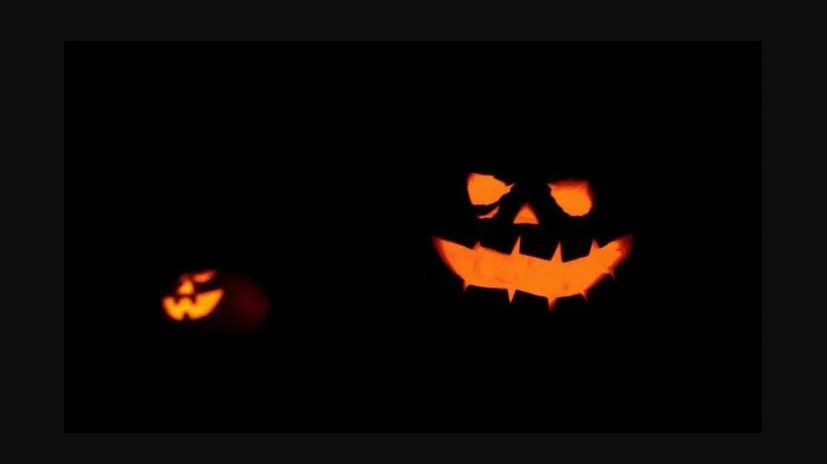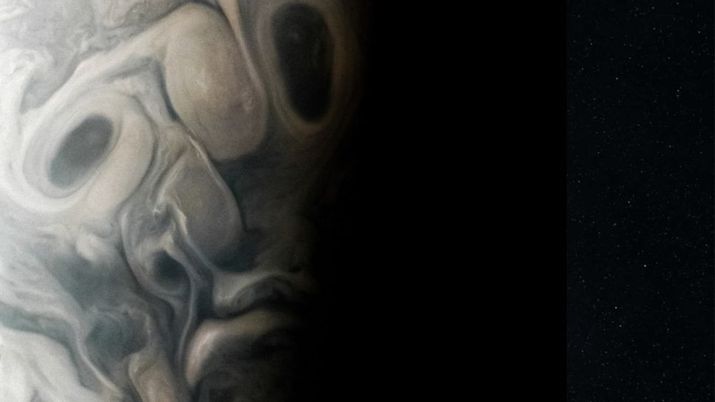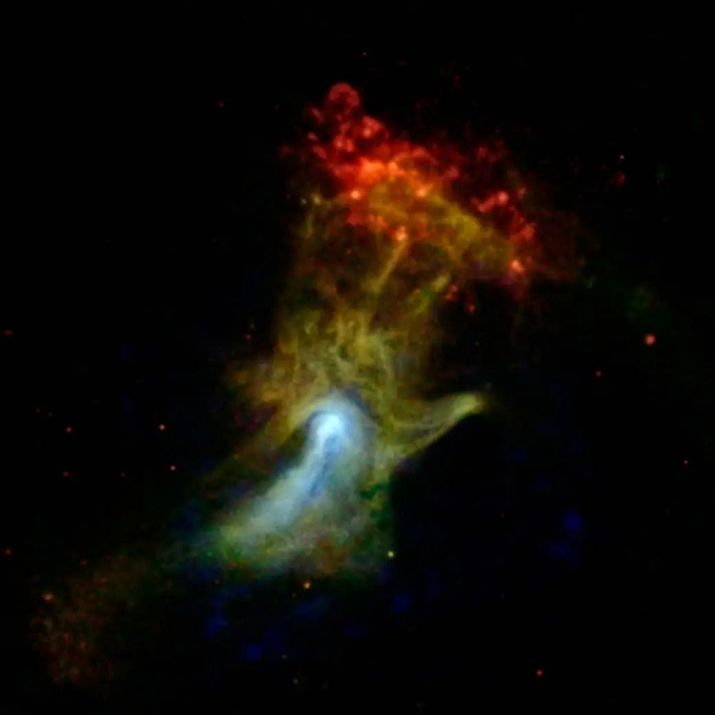
On the night of Halloween, NASA collected twelve photos of space objects in which they look like ghosts, witches, ghouls, zombies, and Halloween pumpkins. You can get scared together thanks to Space.com.
The face of a ghost on Jupiter
NASA’s Juno spacecraft captured a terrifying “face” on Jupiter during a recent flyby of the giant planet. This is a vortex near the north pole of the gas giant. The photographed area is located along Jupiter’s terminator, a line that separates the day and night sides of the planet, so the planet seems to disappear against the dark background of space.

The Hand of God nebula
This glowing green hand does not belong to a space zombie. This is the Hand of God Nebula, a pulsar wind nebula formed by the dense remnant of a star that exploded in a supernova.

A skull or a cluster of galaxies?
It seems that the space AI was painting Munch’s The Scream somewhere. But in fact, this is an X-ray image of a cluster of galaxies known as the Perseus Cluster taken by the Chandra Observatory.

Space ghosts or a cloud of dust?
These are not ghosts escaping from the SH2-136 cloud of interstellar gas and dust. The illuminated dark nebula is located at a distance of about 1200 light-years from us, towards the constellation Cepheus.

Halloween skull in space
How did this skull end up in space? A radar image of asteroid 2015 TB145, which NASA says is probably a dead comet, was taken by the Arecibo Observatory in Puerto Rico on October 30, 2015. Astronomers have determined that the asteroid probably makes one rotation every 2.94 hours and that it reflects only 5 or 6 percent of the sunlight that hits it.

Zombie Pac-Man Nebula
The planetary nebula NGC 246 is called the Skull Nebula. It is hidden in the constellation of China, about 1600 light years from Earth. It is called the Skull Nebula, but some astronomers call it the Park-Man Nebula. It seems to be biting off space.

The Witch’s Head Nebula
It is estimated that the Witch’s Head nebula, so named because of its resemblance to the profile of an evil witch, is located hundreds of light-years away in the constellation Orion.

The eye of Sauron is watching you
The camera of NASA’s Hubble Space Telescope has captured a picture of the star Fomalhaut b orbiting its parent star Fomalhaut. This evil-eye-shaped nebula, officially named Fomalhaut, really looks like the terrifying Eye of Sauron from Tolkien’s works. This eye is “framed by fire… vigilant and attentive, and the black slit of its pupil opened on a pit, a window to nothing.”

Faces on Mars
These rocks on Mars are probably the most famous image of a ghostly face. The original image of “Face on Mars” was taken by NASA’s Viking 1 orbiter on July 25, 1976. But it’s not a face, it’s just a strange pile of stones.

The Ghost Head Nebula
NGC 2080, also called the Ghost Head Nebula, is a chain of star-forming regions located south of the 30 Doradus nebula in the Large Magellanic Cloud, about 170 thousand kilometers away. light years from Earth. Its glowing eyes are areas of star formation with hot clots of hydrogen and oxygen.

The Black Widow Nebula
The image of the Black Widow Nebula was taken by the Spitzer Space Telescope. This giant red space spider is the largest black widow we’ve ever seen! But don’t worry – he won’t bite. In fact, it’s just a nebula, a cloud of interstellar gas and dust.

Zombie star comes back to life
This zombie star, named Tycho, was once a white dwarf or the remnants of a supernova that had already exploded. However, the dead star absorbed too much mass from another neighboring star and exploded again in a so-called Type Ia supernova. The photo was taken by the Chandra X-ray Observatory.

Space pumpkin
The streams of radiation and particles from the massive O-type star carved deep grooves in this nebula, making the cloud of gas and dust look like a Halloween pumpkin lantern. In fact, it is part of the Milky Way, a cloud of gas and dust caused by the outflow of radiation and particles from a massive O-type star that is 15-20 times more massive than the Sun.


